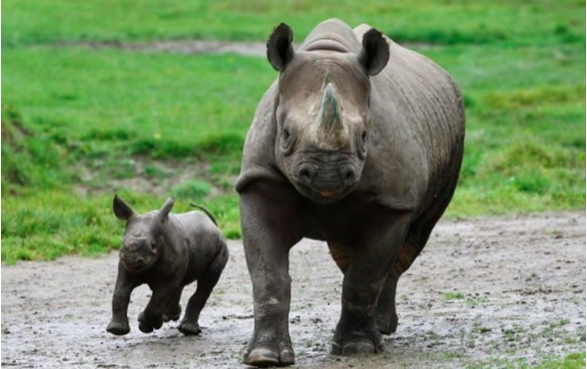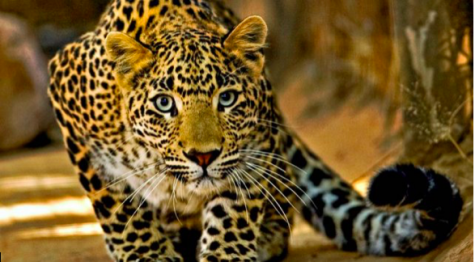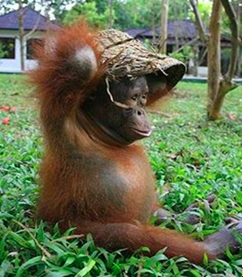TOP 3 CRITICALLY ENDANGERED ANIMALS
These 3 species need help as they are critically endangered!

The world is full of beautiful animals. Did you know that some of these animals are critically endangered?
At the top of the list is the Amur leopard, or scientific name Panthera pardus. Ortentalis, Felis chinensis, bedfordi, fortanierii, and grayi are all the other animals’ scientific names. Its weight ranges from 70-105 pounds, and it lives in temperate, broadleaf, and mixed forests. They are native to the Primorye region of Southeastern Russia . There are only 84 Amur leopards left. Similar to other leopards, such as China and Korea leopards, Amur leopards can run up to 37 miles per hour. This amazing animal has been reported to jump more than 19 feet horizontally and up to 10 feet vertically. The Amur leopard is solitary. It is also nimble-footed and strong. Also, it carries and hides its unfinished prey so that it does not get found by other predators. Additionally, it has been reported that some males stay with females after mating. Sometimes males will follow and fight over a female. They can live in captivity up to 20 years, and in the wild from 10 to 15 years.

The Black Rhino, also known as hook-lipped rhinoceros, is 2nd on the critically endangered list. They can be up to 5.2 feet tall, with a weight from 1,760 – 3,080 pounds .The Black Rhino lives in semi-desert savannah, woodlands, forests, and wetlands in areas such as Kenya, South Africa, and more. There are approximately 65,000 Black Rhinos left in the world. They are the smaller of the two African rhino species. The most noticeable difference between these and White Rhinos is their upper lip. They are browsers rather than grazers, and their pointed lip helps them eat. The Black Rhino population declined significantly in the 20th century due to European hunters and settlers. Between 1960 and 1995, their numbers dropped by a sad 98% to less than 2,500. They have made a wonderful comeback from the brink of extinction; however, sadly, they are still critically endangered due to poaching. Their color may vary between grey and black. The species was first named Rhinoceros bicornes by Carl Linnaeus in the 10th edition of his Systema naturae. The two horns on their skull are made of keratin with the bigger horn measuring up to about 20 in – 55 in.

Third on the list is the Bornean Orangutan, or scientific name Pongo pygmaeus. It’s height ranges from 3.3-4.6 feet tall, and it weighs 66-220 pounds . It lives in lowland rainforests, tropical, swamsp, and mountain forests, and is native to the island of Borneo. There are about 104,700 Bornean Orangutans left in the world . Their population, sadly, has declined by more than 50 percent over the past 60 years. Their habitat has been reduced by at least 55% over the past 20 years. These orangutans have a broad face and a short beard. Its habitat has been seriously affected by hunting and logging. And, like other orangutans, they are highly intelligent. This species was originally discovered by native Malaysians. Sadly, there are even more endangered species than these and more and more are added everyday. We need to help protect these animals and their habitats.

Information Sites : “Bornean Orangutan.” WWF, World Wildlife Fund, 2018, www.worldwildlife.org/species/bornean-orangutan. 722918
“Black Rhino.” WWF, World Wildlife Fund, 2018, www.worldwildlife.org/species/black-rhino.
“Amur Leopard.” WWF, World Wildlife Fund, 2018, www.worldwildlife.org/species/amur-leopard.
“Amur leopards’’ Edited by Leo1pard, Wikipedia, Wikimedia Foundation 5 Sep. 2018,en.m.wikipedia.org/wiki/Amur_leopards
\“Black rhinoceros’’ Edited by Piterkeo, Wikipedia, Wikimedia Foundation 1 Sep. 2018,en.m.wikipedia.org/wiki/Black_rhioceros
“Bornean Orangutan.” Edited by AntiCedros, Wikipedia, Wikimedia Foundation, 31 Aug. 2018, en.m.wikipedia.org/wiki/Bornean_orangutan.






